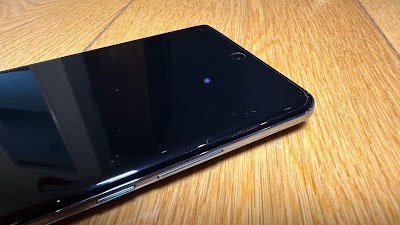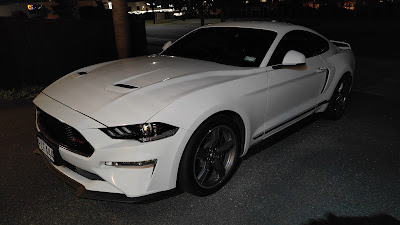This year I decided to take a slightly different approach to my iPhone reviews. Previously I've started with the base models and worked my way up to the Pros - seemed logical enough.
But for the 2023 offerings, I wanted to try things the other way around; start with all the bells and whistles on offer with the iPhone 15 Pro, then "downgrade" to the iPhone 15 Plus and see just how hard-done-by I felt without whatever it is you get for the extra money.
The results of this experiment really surprised me.
The base-model iPhone 15 and iPhone 15 Plus are identical in every way - other than screen and battery size. They both come in Black, Blue, Green, Yellow and now Pink - and this year the aluminium frame (coloured to match) has been slightly rounded at the edges to feel more comfortable in your hand.
A bigger battery means a longer time between charges and that's definitely true when using the iPhone 15 Plus - with what I consider to be "typical usage" I could easily make it through two full days on a single charge. I don't think I've ever encountered battery life as good as that on an iPhone before.
By now it's been widely publicised all four models in the iPhone 15 range have ditched their lightning ports for USB-C charging instead. This is clearly far more convenient when it comes to how many charging cables you need to keep on hand and it also means a potential boost in charging times and data transfer speeds. Admittedly, the iPhone 15 Pro and Pro Max phones offer even faster transfer speeds but unless you're regularly uploading large video files it won't matter much to you.
You can even use the iPhone 15 Plus to charge accessories like your Apple Watch or AirPods by plugging them directly into the new USB-C port - and with all that extra battery life on board, why wouldn't you?
The 6.7-inch Super Retina XDR display is obviously much larger than the 6.1-inch screen on the standard iPhone 15 - and it really depends on the user as to whether this is something you need. Sure it's great to be able to use bigger text and enjoy larger icons and widgets - especially for those of us who've reached a certain age where reading causes squinting. However, this is also no longer a handset that slides easily into the pocket. I don't find it overly heavy but its width and length mean I can still jam it into my jeans... but only just.
If you love gaming - or even just streaming - I'd suggest a display of this size is pretty much essential. It's crisp and clear, ramps up to an impressive 2,000 nits brightness in outdoor conditions and is protected by iPhone's unique Ceramic Shield - claimed to be tougher than any other smartphone glass and in my experience that seems to be spot on.
The only real display drawback with the iPhone 15 Plus versus the Pro is the refresh rate - 60Hz against 120Hz. Funnily enough, I've still found the screen on the 15 Plus to be fluid and responsive and even when racing through the events calendars on Asphalt 9 (my current obsession) I didn't feel like anything was underwhelming, display-wise.
This is probably due in no small part to the A16 Bionic chip running the whole show. Although this is not the chip inside this year's Pro models, it is what the 2022 iPhone 14 Pro and Pro Max were built on which means that yes, it's a very powerful and efficient chip indeed.
That also means the iPhone 15 Plus can do things only the Pro's could do last year, like Dynamic Island - the unique, interactive shortcut accessed by touching the front-facing camera cutout at the top of the screen. We've also seen an upgrade to second-generation Ultra-Wideband. That means better connectivity and greater precision when using Find My.
A great chip usually indicates great photo processing too - and the iPhone 15 Plus stacks up here as well. Although the primary shooter is still only a dual-lens array, you do now get a 48MP primary sensor and a 2x telephoto lens - and it doesn't end there. Just like the Pro models, this year the 15 Plus also lets you take portrait (bokeh) shots even when not in Portrait mode, simply by tapping the little "f" symbol in the bottom of the screen.
While you don't have the new Macro option, or the ability to shoot and save "raw" images and video like you can with the Pros, you still get excellent low-light performance, Cinematic Mode from both front and rear cameras, a new smoother zoom wheel and Action Mode for pretty good digital stabilisation.
In short, other than not having the different lens and zoom options of the Pro models, I've found the photographic performance of the iPhone 15 Plus to be otherwise great.
In my iPhone 15 Pro review, I already touched on the major improvements Apple has made to the latest version of iOS - things like more interactive home screen widgets, better fitness and well-being apps and features like StandBy mode are of course, all on the iPhone 15 Plus too. However, there are certain limitations.
For example, StandBy Mode - which automatically turns your phone screen into a bedside clock or media player when attached to a MagSafe charger horizontally - only shows for a few seconds before disappearing. This has something to do with iPhone 15 and 15 Plus not having Always On Display. Why don't they have Always On Display? No idea.
I feel like I asked a similar question this time last year when Apple introduced Dynamic Island - but only on the Pro models. Now we're seeing Dynamic Island on all four iPhone 15s it makes me wonder if AOD will follow suit next year. Who knows?
A cynical person might suggest Apple has kept features like this exclusively for the Pro models so they can justify the extra expense and entice customers to make the jump in price. Or it could just be the base model handsets are physically incapable of performing such tasks with their current hardware and if things change next year that means the nuts and bolts have upgraded too.
Whatever the case, I can honestly say I've thoroughly enjoyed using the iPhone 15 Plus, more or less directly after spending time with the Pro. This means it's difficult for me to mount a convincing argument to choose Pro or Pro Max unless you're super serious about photo and video content - and I do mean super serious because the camera performance of the iPhone 15 Plus definitely compares well in many departments.
Starting at NZ$1,849.00, this is hardly an entry-level device, obviously. But its powerful chip, large and stunning display and durable build definitely make it worth the investment.













































